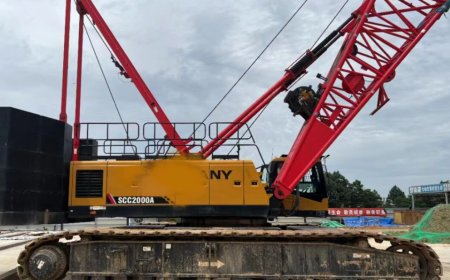The Ultimate Guide to Office Cubicles: Styles, Benefits, and Setup Tips
Explore the ultimate guide to office cubicles, including styles, benefits, and setup tips. Learn how modern cubicles can improve productivity, organization, and workplace comfort for any business.

Office layout plays a crucial role in shaping productivity, communication, and overall employee satisfaction. While trends in open office spaces have taken the spotlight in recent years, cubicles remain a versatile and highly functional solution for many organizations. Far from the drab, isolating partitions of the past, todays cubicles are designed with flexibility, comfort, and aesthetics in mind.
Whether youre designing a new office or reconfiguring an existing space, this ultimate guide explores the various cubicle styles, their benefits, and practical setup tips to help you build an efficient and engaging workplace.
Why Office Cubicles Still Matter
Despite the rise of open-concept floor plans, cubicles continue to offer significant advantages. They provide a structured environment that balances privacy and collaboration. Modern cubicles are customizable, adaptable, and designed with employee wellness in mind.
For businesses that require organization, acoustic control, and optimized space usage, cubicles provide the perfect blend of form and function.
Benefits of Cubicles in the Modern Workspace
1. Increased Productivity
Cubicles create personal zones that help minimize distractions. By offering partial enclosures, employees are better able to focus on individual tasks without completely disconnecting from their team. Compared to open desks, cubicles reduce visual and auditory interruptions, improving concentration.
2. Improved Organization
Many cubicles come with built-in storage, shelves, and drawers, making it easier for employees to stay organized. A tidy workspace reduces stress and allows employees to work more efficiently.
3. Cost-Effective Layouts
Compared to building private offices, installing cubicles is significantly more budget-friendly. Modular cubicle systems also allow you to make the most of available square footage without compromising on comfort or function.
4. Personalization and Comfort
Employees can personalize their cubicles with plants, decorations, or ergonomic accessories. This flexibility helps boost morale, which in turn increases productivity and engagement.
5. Enhanced Privacy with Flexibility
Cubicles offer varying levels of privacy depending on their configuration. High-panel cubicles can provide semi-private offices for focused work, while low-panel options support collaboration. The flexibility allows businesses to design workspaces tailored to different departments and job functions.
Popular Styles of Office Cubicles
Choosing the right cubicle style depends on your companys workflow, culture, and space requirements. Here are some of the most common types:
1. Standard Cubicles
These traditional cubicles feature three walls and an open entrance. Theyre great for employees who need quiet and concentration but still benefit from proximity to coworkers. These are ideal for administrative and customer service roles.
2. Modular Cubicles
Modular cubicles are highly flexible and can be reconfigured as your office needs change. Panels, work surfaces, and accessories can be added or removed to accommodate different layouts, making them ideal for growing businesses.
3. Low-Wall Cubicles
Also known as open cubicles, these feature short panels that define individual spaces while maintaining line-of-sight for communication. These are great for creative teams or environments where collaboration is key.
4. High-Wall Cubicles
High-wall cubicles provide a more private, enclosed spacecloser to a mini-office. Theyre best suited for roles requiring confidentiality or intense concentration, such as HR or accounting.
5. Team Pods or Collaborative Cubicles
These cubicles are designed for groups, allowing several team members to work in close proximity with shared desk areas and lower dividers. This setup encourages brainstorming and teamwork.
Factors to Consider When Choosing Cubicles
Before selecting cubicles for your office, evaluate your specific needs and constraints. Here are key considerations:
1. Office Size and Layout
Measure your space carefully and map out a floor plan. Make sure your chosen cubicles allow for efficient traffic flow, emergency exits, and shared amenities like conference rooms or break areas.
2. Nature of Work
Different job roles may require different cubicle styles. For example, data entry staff may need quiet high-wall cubicles, while marketing teams may prefer open pods for collaboration.
3. Privacy Requirements
Consider whether your employees need visual privacy, acoustic separation, or both. Choose cubicles with appropriate panel heights and materials to meet these needs.
4. Technology Integration
Modern cubicles should support the tech demands of your team. Look for options with built-in cable management, power ports, and monitor mounts to keep desks clutter-free.
5. Brand Aesthetics
Choose cubicle colors, finishes, and styles that align with your brand identity. A cohesive office design helps reinforce company culture and impress clients or visitors.
How to Set Up Office Cubicles for Efficiency and Comfort
Once youve selected your cubicles, setting them up correctly ensures that you get the most value out of your investment.
1. Create Departments or Zones
Group cubicles by department to streamline communication and workflow. For example, place your customer support team together in one area and your IT department in another.
2. Leave Room for Movement
Avoid overcrowding. Make sure aisles are wide enough for employees to move comfortably and comply with ADA regulations.
3. Incorporate Natural Light
Where possible, position cubicles to take advantage of windows and natural light. Studies show that daylight boosts mood and productivity.
4. Add Common Areas
Balance the cubicle setup with communal spaces like breakout zones, lounges, or huddle rooms. This allows employees to take breaks or hold informal meetings without disrupting others.
5. Encourage Personalization
Allow employees to decorate their cubicles to make the space feel welcoming. Small personal touches can lead to a big morale boost.
Cubicles and Hybrid Work Environments
As hybrid and remote work models grow in popularity, cubicles still play a critical role in providing structure when employees are in the office. In fact, many businesses are rethinking their space to include:
-
Hotel-style Cubicles: Temporary workstations for hybrid workers.
-
Flexible Layouts: Reconfigurable cubicles that adapt to daily occupancy.
-
Privacy Pods: Enclosed cubicles for virtual meetings or focused tasks.
Cubicles support hybrid setups by offering both predictability and adaptabilitykey traits for the future of work.
Sustainable and Eco-Friendly Cubicle Options
Many manufacturers now offer cubicles made from recycled or low-emission materials. Look for certifications such as GREENGUARD or FSC when sourcing furniture. Sustainable cubicles not only reduce your environmental footprint but can also qualify your office for green building credits.
Refurbished or remanufactured cubicles are another excellent option for budget-conscious companies looking to make an eco-friendly choice.
Common Mistakes to Avoid When Installing Cubicles
-
Ignoring Employee Feedback: Get input from staff to ensure the new layout supports their workflow.
-
Cutting Costs Too Deeply: Cheap cubicles may lack durability or functionality.
-
Overlooking Lighting and Ventilation: Poor lighting or airflow can make cubicles uncomfortable.
-
Neglecting Ergonomics: Provide adjustable chairs, monitor stands, and proper lighting.
-
Failing to Plan for Growth: Choose modular systems that can scale with your business.
Conclusion: Cubicles That Work for Your Office
Well-designed cubicles remain one of the most effective ways to organize an office, balance privacy and collaboration, and optimize real estate costs. From traditional high-wall setups to modern collaborative pods, cubicles are more versatile than ever.
By understanding the different styles, benefits, and setup strategies, you can create a workplace that supports productivity, comfort, and your unique company culture. Whether you're launching a new office or upgrading your current space, investing in the right cubicles ensures a more efficient, engaging, and scalable work environment.






























